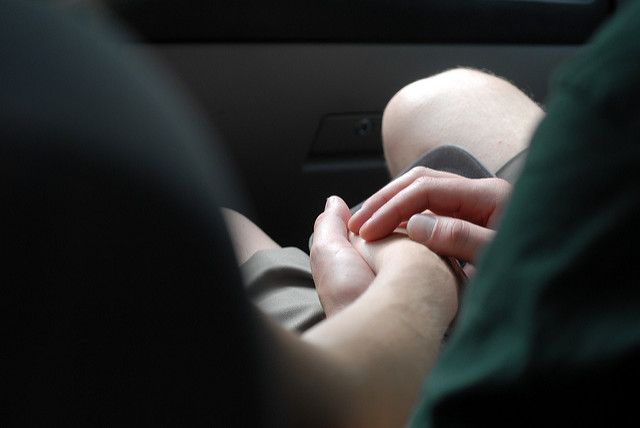How did you learn to apologize? We all know the words “I’m sorry”, but were you ever taught how to effectively apologize to another person?
A typical marital argument can get heightened by inauthentic apologies, “I’m sorry you overreacted,” or “I’m sorry you think that,” or “I’m sorry your mother is insane” are not apologies. You can’t just slap an “I’m sorry” label on an insult or accusation and call it an apology. That will inflame the situation, leading to more arguing and distance.
Here’s the good news: it’s relatively simple to give an authentic apology. There are three key steps, and if you’re able to follow the recipe, you will be able to give an apology that not only feels good for the recipient; it will feel good to you.
Step One: Own it. Something has happened. Maybe you bumped someone and didn’t realize it. Maybe you sent an email that was received in a way you didn’t intend it. Maybe you intentionally did something malicious, like steal, cheat or lie. The first step here is to acknowledge what you did.
Instead of saying, “I didn’t mean to upset you with that email”, own it. Simply say, “I am sorry that I sent that email to your boss about you.” Instead of “sometimes I have smelly tuna fish also”, which is an explanation of what you said, simply say, “I’m sorry I made fun of your lunch”.
And of course, “I am sorry I didn’t invite you to the party” is far better than, “It wasn’t that big of a party, it wasn’t that fun, I didn’t think you’d want to go.”
Don’t explain why you did it, just acknowledge what you did.
Step Two: Identify the impact. Here’s the real juice of the apology, where you get to put yourself in someone else’s shoes. Now that you’ve owned the apology (see Step One), and acknowledged what you did, this is the time where you take a visit to their world, and consider the impact. This may be as simple as “I’m sorry I hit your car. I damaged your fender, and I realize that now you’ll have to take it to the shop, and deal with all the logistics to get it repaired. I’m sorry I hit your car, and I’m sorry I created this additional stress for you.”
Drop the mic, baby! You’ve said it all! You took responsibility for your action, identified the tangible impact it will have, as well as the emotional impact.
Let’s try another: “I’m sorry I sent that email to your boss about you. I can imagine that when you saw it, you felt hurt, or betrayed, or sad. I am sorry for the pain I caused you.”
By empathizing with the person you’ve hurt, you are not explaining or excusing your action. Avoid saying, “That wasn’t what I meant!” or “It wasn’t a big deal!” Don’t explain it or minimize it. Drop all that somewhere else. Simply put yourself in their shoes, and try to understand how they felt.
Step 3: Repair It. Obviously, with something like a car accident, you can pay for the repair. With physical, tangible things, this is easy. If you stained someone’s new suit, pay for the dry cleaner, and then do something extra to make up for the unnecessary stress – send flowers or a pizza; something they would like. Take the time to repair the damage, and then repair the stress.
More emotional apologies, like “I’m sorry for what I said,” have less obvious reparation, so it’s time to get creative. “I imagine that when I said that about your brother, it embarrassed you and hurt you.” Are there positive things you can say about the sibling? How can you repair the damage, perhaps even strengthening positive feelings in the process?
If you’re fresh out of ideas, you can always return to, “I’d like to make this up to you, but I’m not sure how. Is there anything I can do to do that?”
This may be why dunking booths were created. By allowing the person you’ve pained to tell you what would make them feel better – and then seeing it through, you’re empowering that person, helping them move through pain and hurt and return to their strength.
The three steps are simple: Own It, Identify the Impact, and Repair It. If you move through these steps with each apology, both you and the person you’ve hurt will move forward with more ease, strengthening your relationship in the process.
image: “DSC_9636” © Joshua Ganderson used with permission via Creative Commons License
- Three Steps to an Effective Apology - Thu, Sep 14, 2017
- Hinei Mah Tov Prayerbook Sale Exceeds Goal! - Thu, Mar 3, 2016

